Historical Tour
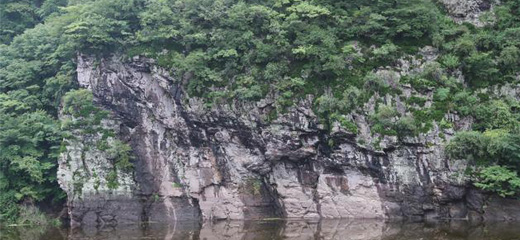
Petroglyphs of Bangudae Terrace(National Treasure No. 285)
The Petroglyphs of Bangudae Terrace, which date back 7,000 to 3,500 years ago, is a prehistoric site with engravings that depict the fishing and hunting activities of the people during that era. The rock faces on Bangudae Terrace have roughly 300 engravings including human figures, hunting tools such as boats and harpoons, and 20 different sea and land animals such as whales, turtles, seals, tigers, boars, and deer. The site is considered the most ancient evidence of whaling worldwide, and is on the UNESCO World Heritage tentative list.
-
- Address
- 285, Bangudaean-gil, Eonyang-eup, Ulju-gun (Daegok-ri)
-
- Tel
- +82-52-204-0321~4 (Tourism Division of Ulju-gun County Office)
-
- From Ulsan Airport
- Take bus no. 5005 and get off at KTX Ulsan Station
-
- From KTX Ulsan Station
- Take bus no. 348 (stopping at Daegok Museum) and get off at Ulsan Petroglyph Museum. (Walk 10 min.)
-
- From Taehwagang Station - Intercity/Express Bus Terminal
- Take bus no. 1713 and get off at Former Eonyang Bus Terminal.
▶ Transfer to bus no. 348 (stopping at Daegok Museum) and get off at Ulsan Petroglyph Museum.
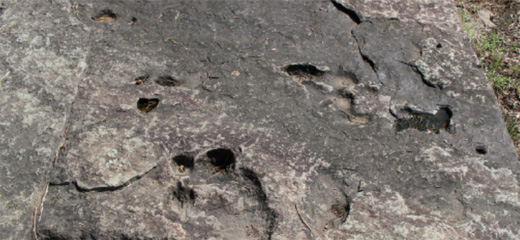
Petroglyphs of Cheonjeon-ri (National Treasure No. 147) / Dinosaur Tracksite in Cheonjeon-ri
Engravings made in the New Stone Age were discovered on a rock in Cheonjeon-ri in 1970. This rectangular rock, slightly tilted upward, is nearly 9.5 meters wide and 2.7 meters tall. The rock not only features prehistoric petroglyphs but also includes inscriptions and pictures of a sailboat, horse, dragon, and procession from the Silla period that were carved in thin lines. This dinosaur tracksite is a valuable resource for studying natural history, featuring the footprints of medium to large dinosaurs that lived about 100 million years ago during the Cretaceous period. The site includes roughly 200 footprints of dinosaurs including sauropods and ornithopods.
-
- Address
- San 210-2, Cheonjeon-ri, Dudong-myeon, Ulju-gun
-
- Tel
- +82-52-204-0321~4 (Tourism Division of Ulju-gun County Office)
-
- From Ulsan Airport
- Take bus no. 5005 and get off at KTX Ulsan Station.
-
- From KTX Ulsan Station
- Take bus no. 348 (stopping at Daegok Museum) and get off at Daegok Museum. (Walk 15 min.)
-
- From Taehwagang Station - Intercity/Express Bus Terminal
- Take bus no. 1713 and get off at Former Eonyang Bus Terminal.
▶ Transfer to bus no. 348 (stopping at Daegok Museum) and get off at Daegok Museum.
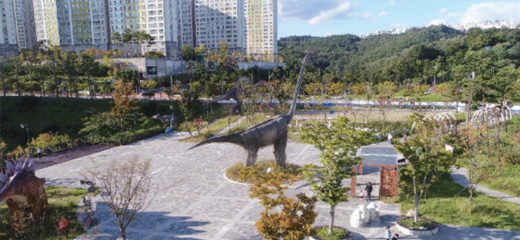
Dinosaur Tracksite Park
In Yugok-dong, Jung-gu, there are about 80 dinosaur fossil footprints, including three footprints of Maniraptora and 77 footprints of the herbivorous dinosaur Koreanosaurus, which are dinosaurs from the Cretaceous period about 100 million years ago. Due to its good condition, the site is regarded as a valuable resource for natural history research.
-
- Address
- 54-1, Yugok-dong, Jung-gu
-
- Tel
- +82-52-290-4425 (Parks and Greenery Division of Jung-gu Office)
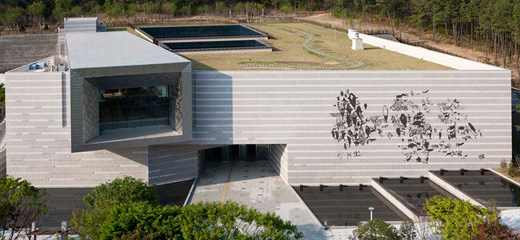
Ulsan Museum
Opened in 2011, Ulsan Museum manages permanent exhibition galleries and special exhibition galleries. The permanent exhibition galleries introduce Ulsan’s history and culture from prehistoric times to 1962, when the city was specifically designated as an industrial zone. Moreover, the Children’s Museum offers various experience programs with the exhibition theme, “A History Trip with the East Sea Dragon from Daewangam, Tomb of King Munmu.” Advance reservations are required.
-
- Address
- 277, Duwang-ro, Nam-gu
-
- Tel
- +82-52-222-8501
-
- Website
- https://museum.ulsan.go.kr
-
- Admissions
- Permanent exhibitions (free)
-
- Hours
- 09:00~18:00(Final admission at 17:00)
-
- Closed on
- Every Monday
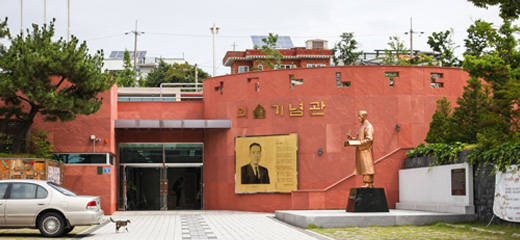
Oesol Memorial Hall
Choi Hyeonbae (pen-name: Oesol) was a great Korean independence activist and Korean language scholar who devoted his entire life to disseminating Hangeul, or the Korean alphabet, during the Japanese occupation. This memorial hall displays artifacts used by him, his major works, and items that suggest how Hangeul has changed, as well as the restored site of his birth home.
-
- Address
- 15, Byeongyeong 12-gil, Jung-gu
-
- Tel
- +82-52-290-4828
-
- Website
- http://www.junggu.ulsan.kr/oesol
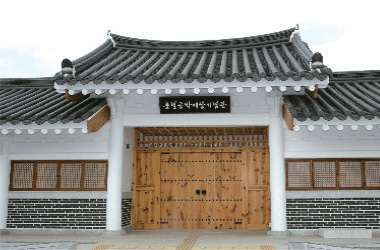
Birth Home of Park Sang-jin
Park Sang-jin (1884–1921) is a Korean independence activist who organized the Joseon Sovereignty Recovery Group and the Korea Liberation Association in 1915 as a part of the independence movement against Japanese imperialism. He served as the commander-in-chief of the Korea Liberation Association. The birth home of Park Sang-jin was built in the late Joseon dynasty and restored in 2007.
-
- Address
- 10, Parksangjin 5-ro, Buk-gu
-
- Tel
- +82-52-241-8568
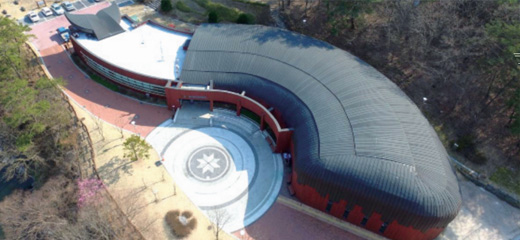
Ulsan Petroglyph Museum
The country's only petroglyph museum houses life-size models of the Petroglyphs of Bangudae Terrace and Cheonjeon-ri and offers prehistoric culture experience programs.
-
- Address
- 254, Bangudaean-gil, Dudong-myeon, Ulju-gun
-
- Tel
- +82-52-229-4797
-
- Website
- http://bangudae.ulsan.go.kr
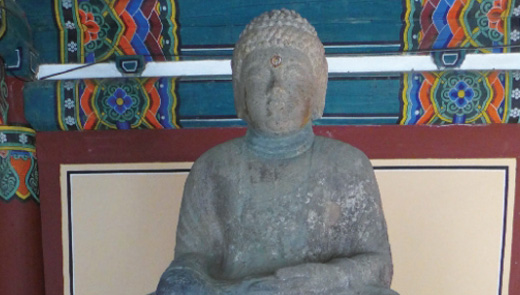
Stone Seated Buddha at Ganwolsa Temple Site(Treasure No. 370)
The Stone Seated Buddha at Ganwolsa Temple Site is the only stone Buddha in Ulsan designated as a Treasure. Although the mandorla is lost and the pedestal is damaged, the overall shape of the stone seated Buddha is well preserved. It shows the stylistic features of Buddhas from the late Unified Silla period with its slightly narrow shoulders and poor sense of volume despite the ample body.
-
- Address
- 215, Deungeogalpeuseu-ri, Sangbuk-myeon, Ulju-gun
-
- Tel
- +82-52-204-0321~4 (Tourism Division of Ulju-gun County Office)
-
- From Ulsan Airport
- Take bus no. 5005 and get off at KTX Ulsan Station. ▶ Transfer to bus no. 304 or 323 and get off at the entrance to Ganwol.
-
- From KTX Ulsan Station
- Take bus no. 304 or 323 and get off at the entrance to Ganwol
-
- From Taehwagang Station - Intercity/Express Bus Terminal
- Take bus no.1713, and get off at Former Eonyang Bus Terminal. ▶ Transfer to bus no. 304 or 323 and get off at the entrance to Ganwol.
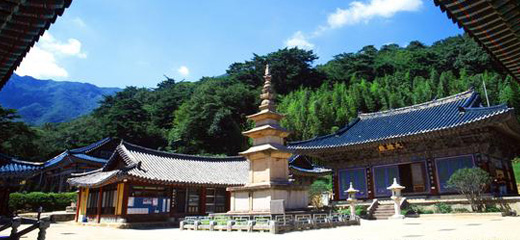
Seongnamsa Temple
Seongnamsa Temple was established in 824 during the Silla period to pray for the defense and glory of the country by the State Preceptor Doui, who was the first person to introduce Zen Buddhism to the Korean Peninsula. The temple consists of nearly 30 buildings including Daeungjeon Hall, Geungnakjeon Hall, and a training area for Buddhist nuns. Winter presents a wonderful landscape with the snow-draped Gajisan Mountain and Seongnamsa Temple.
-
- Address
- 557, Seongnam-ro, Sangbuk-myeon, Ulju-gun
-
- Tel
- +82-52-264-8900
-
- From Ulsan Airport
- Take bus no. 432, or 482 and get off at the Intercity/ Express Bus Terminal. ▶Transfer to bus no. 807 or 1713 and get off at Seongnamsa Temple
-
- From KTX Ulsan Station
- Take bus no. 328 or 807 and get off at Seongnamsa Temple.
-
- From Taehwagang Station - Intercity/Express Bus Terminal
- Take bus no.807 or 1713 and get off at Seongnamsa Temple.
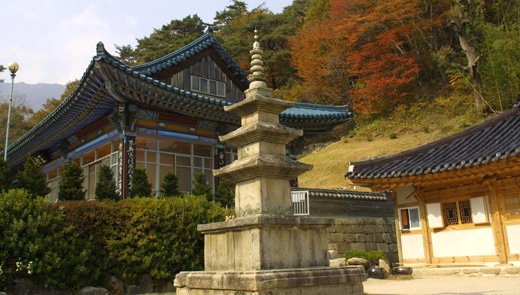
Three-story Stone Pagoda of Seongnamsa Temple(Tangible Cultural Heritage No. 5)
The Stone Pagoda of Seongnamsa Temple has a three story body on a two-story base. Though it is relatively small with a height of 2.5meters,the stonepagoda represents the general style of the Unified Silla period.
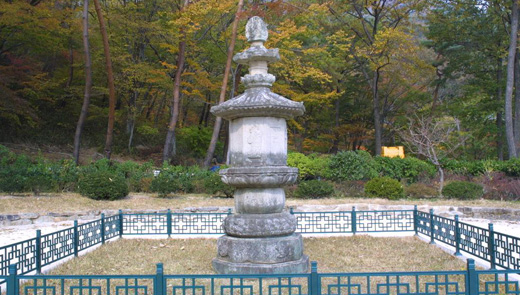
Stupa of Seongnamsa Temple, Ulju
A stupa is a monument built to enshrine the remains ofrenowned Buddhist monks. The Stupa of Seongnamsa Temple, 3.53meters tall with an octagonal shape, is a great example of the stupa style of the late Unified Silla period.
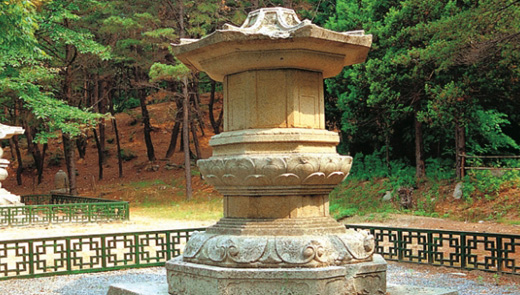
Stupa at Manghaesa Temple Site, Ulju (Treasure No. 173)
According to Samguk Yusa (Memorabilia of the Three Kingdoms), Manghaesa Temple was built as a tribute to the dragon king of the East Sea by King Heongang of Silla. The stupas at the temple site are consistent with the basic octagonal form of stupas during the Unified Silla period.
-
- Address
- 102, Manghae 2-gil, Cheongnyang-eup, Ulju-gun
-
- Tel
- +82-52-204-0321~4 (Tourism Division of Ulju-gun County Office)
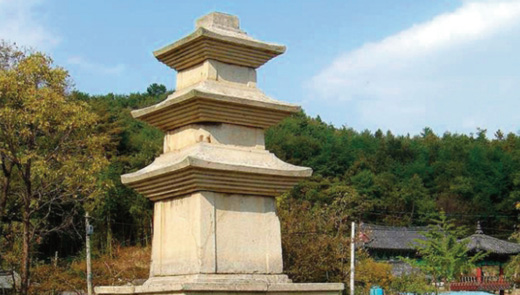
Three-story Stone Pagoda at Cheongsongsa Temple Site, Ulju(Treasure No. 382)
According to Samguk Yusa (Memorabilia of the Three Kingdoms), Manghaesa Temple was built as a tribute to the dragon king of the East Sea by King Heongang of Silla. The stupas at the temple site are consistent with the basic octagonal form of stupas during the Unified Silla period.
-
- Address
- 1420, Yul-ri, Cheongnyang-eup, Ulju-gun
-
- Tel
- +82-52-204-0321~4 (Tourism Division of Ulju-gun County Office)
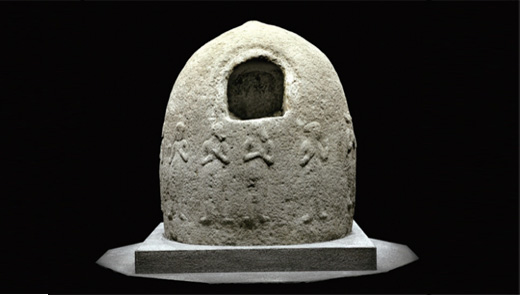
Stupa with Twelve Zodiac Animal Deities in Relief from Taehwasa Temple Site, Ulsan(Treasure No.441)
The Stupa with Twelve Zodiac Animal Deities in Relief from Taehwasa Temple Site is the oldest bell-shaped stupa in Korea. It features the 12 Chinese zodiac animal deities carved on its surface.
-
- Address
- Ulsan Museum, 277, Duwang-ro, Nam-gu
-
- Tel
- +82-52-222-8501~3
-
- Website
- http://museum.ulsan.go.kr
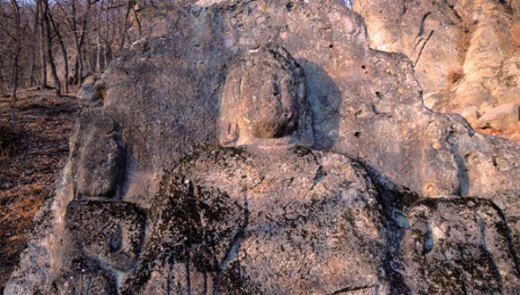
Seated Rock-carved Buddha in Eomul-dong(Tangible Cultural Heritage No. 6)
The Seated Rock-carved Buddha in Eomul-dong is carved in relief on a huge rock called “Bangbawi Rock.” The work, which was presumed to be created during the Unified Silla period,is a Bhaisajyaguru Buddha Triad with the Bhaisajyaguru Buddha (MedicineBuddha) seated in the middle flanked by the Bodhisattvas of Suryaprabha and Candraprabha.
-
- Address
- San 122, Eomul-dong, Buk-gu
-
- Tel
- +82-52-241-7733 (Tourism and Ocean Development Division of Buk-gu Office)
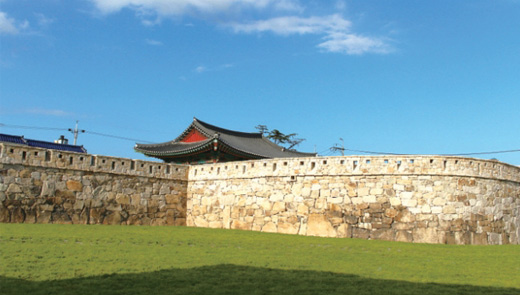
Eonyangeupseong Walled Town, Ulju(Historic Site No. 153)
Eonyangeupseong Walled Town was first built with earthen fortifications in 1390 (the second year of King Gongyang) and was rebuilt as a larger stone fortress by Governor LeeDamryong in 1500 (the sixth year of Yeonsangun). The structure and construction method of Eonyangeupseong Walled Town exemplifies the typical walled towns on plains in the Joseon period at the end of the 15th century and is important evidence for studying walled towns on plains from that time.
-
- Address
- 55-8, Seongan 2-gil, Eonyang-eup, Ulju-gun
-
- Tel
- +82-52-204-0321~4 (Tourism Division of Ulju-gun County Office)
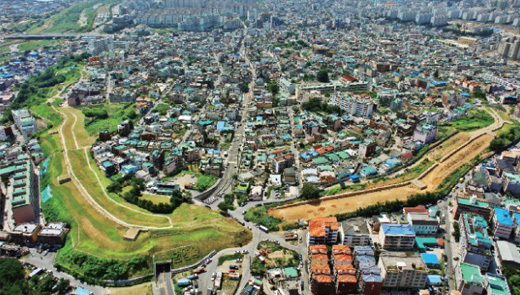
Military Headquarters of Gyeongsangjwa-do Province, Ulsan (Historic Site No. 320)
The Military Headquarters of Gyeongsangjwa-do Province is a fortress where the division commander led the army to defend against invasions of Japanese raiders during the Joseon dynasty. According to records, each gate in the four cardinal directions had a three-room gate tower, an outwork, a defense tower attached to the outside of a wall, and a moat surrounding the fortress.
-
- Address
- 149-8, Seo-dong, Jung-gu
-
- Tel
- +82-52-290-3653 (Culture and Tourism Division of Jung-gu Office)
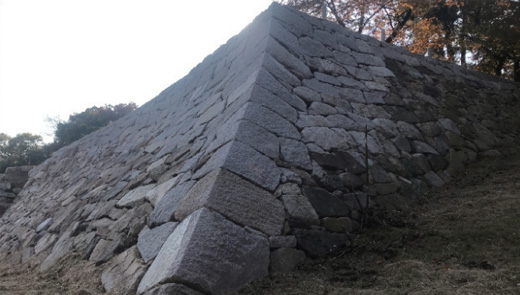
Ulsan Japanese Fortress(Cultural Heritage Material No. 7)
During the Jeongyu War, or the Second Japanese Invasion of Korea in 1597 (the 30th year of King Seonjo), Ulsan Japanese Fortress was built on a hill (Hakseongsan Mountain) near the downstream of the Taehwagang River by Asano Yoshina and was usedbyKatoKiyomasa,whowas one of the three senior commanders It is recorded that the stone walls of Ulsan Walled Town and the military headquarters were torn down to build this Japanese fortress. Large stones were broken up to form the foundation and pebbles were put between big stones to complete the walls.
-
- Address
- 54, Hakseonggongwon 3-gil, Jung-gu
-
- Tel
- +82-52-290-3653 (Culture and Tourism Division of Jung-gu Office)
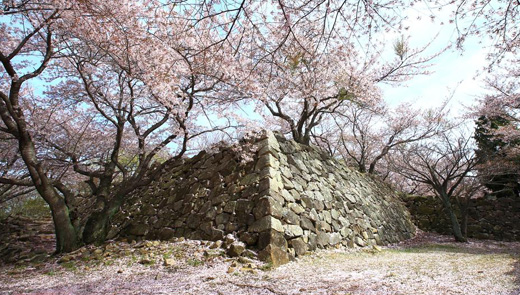
Seosaengpo Japanese Fortress(Cultural Heritage Material No. 8)
Seosaengpo Japanese Fortress is a Japanese-style terraced stone fortress built during the Imjin War, or Japanese Invasion of Korea, in 1593 (the 26th year of King Seonjo). From the gate to the top, the fortress has several layers of inclined walls. It is a valuable resource for studying Japanese fortresses from the end of the 16th century.
-
- Address
- 711, Seosaeng-ri, Seosaeng-myeon, Ulju-gun
-
- Tel
- +82-52-204-0321~4 (Tourism Division of Ulju-gun County Office)
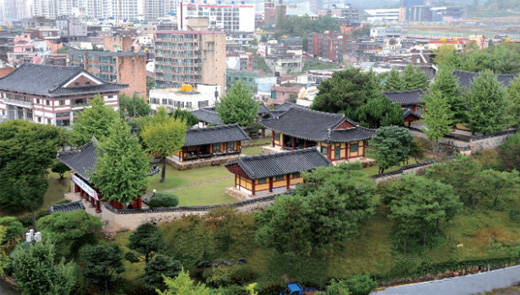
Ulsanhyanggyo Local Confucian School(Tangible Cultural Heritage No. 7)
Ulsanhyanggyo Local Confucian School was originally built in Gugyo Village in Bangu-dong, north of Ulsan Japanese Fortress, which was often called Sinhakseong Fortress. It was rebuilt at the same site after it was burned down during the war and was transferred to its current location in 1652 (the third year of King Hyojong).
-
- Address
- 117, Myeongnyun-ro, Jung-gu
-
- Tel
- +82-52-243-0129
-
- Website
- http://www.ushg.co.kr
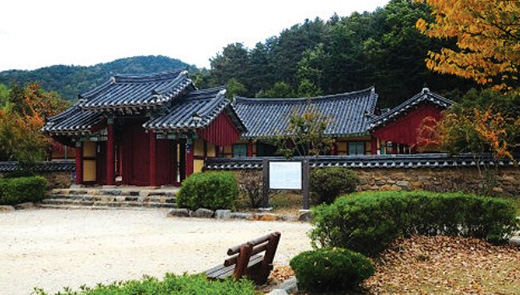
Park Jesang Historic Site(Monument No. 1)
Park Jesang was a loyal subject who served King Nulji of Silla (who reigned from 417 to 458).In 1745, King Yeongjo of the Joseon dynasty established Chisanseowon Confucian Academy in memory of the loyalty of Park Jesang, his wife, and his two daughters. On the left side of Chisanseowon is the Chungnyeolgong Park Je Sang Memorial Hall. If you climb up Chisullyeong Peak (which takes 2 hours), you can see MangbuseokRock,(Rock of the Faithful Woman), named after the legend of a woman who became a stone while waiting for her husband’s return, and Euneuram Rock, where her soul is said to have hidden.
-
- Address
- 7, Chisullyeong-gil, Dudong-myeon, Ulju-gun
-
- Tel
- +82-52-204-0321~4 (Tourism Division of Ulju-gun County Office)
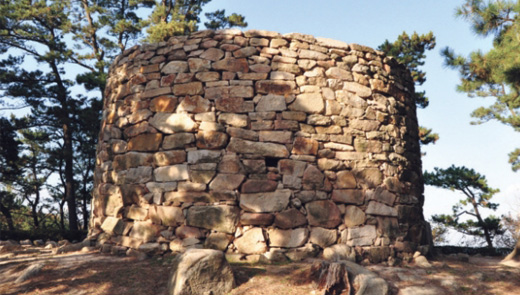
Jujeon Beacon (Monument No. 3)
Beacons were used by the military to communicate with nearby beacons by sending signals with torch lights at night and smoke during the day and to inform the center and the local camp of an emergency. Jujeon Beacon received signals from Cheonnae Beacon and passed the news on to Yupo Beacon
-
- Address
- San 193, Jujeon-dong, Dong-gu
-
- Tel
- +82-52-209-3322 (Cultural and Sports Division of Dong-gu Office)
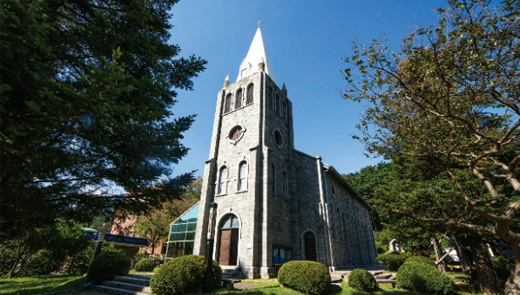
Main Building and Presbytery of Eonyang Catholic Church, Ulsan(Registered Cultural Heritage No. 103)
Eonyang Catholic Church, built in 1936, is the first Catholic church in Ulsan. The main church building is a Gothic two-story stone building with a gambrel roof. As it is the oldest stone building in Ulsan preserving its original form, the main building is very significant in terms ofreligion and history. The presbytery where priests used to reside is currently an exhibition hall for religious relics.
-
- Address
- 11, Gugyodong 1-gil, Eonyang-eup, Ulju-gun
-
- Tel
- +82-52-262-5312
-
- Website
- http://eonyang.pbcbs.co.kr
정보담당자담당부서 : 미등록담당자 : 미등록연락처 : 미등록
Ulsan Tour
TEL : 082-052-120
Copyright 2021 Ulsan Metropolitan City All Rights reserved.
Reproduction of all site contents are not allowed without the permission of Ulsan